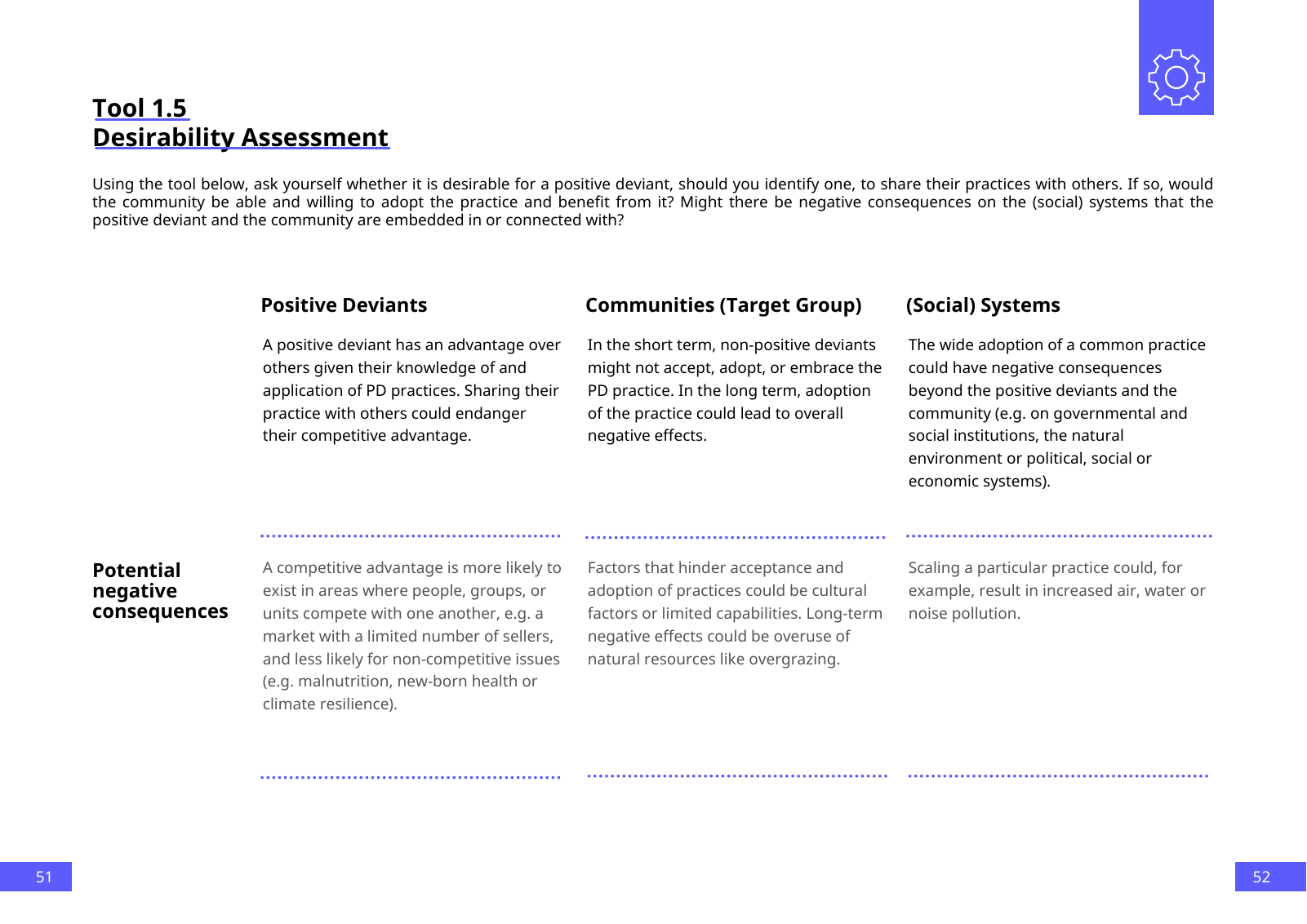Tool 1 5 Desirability Assessment Using the tool below ask yourself whether it is desirable for a positive deviant should you identify one to share their practices with others If so would the community be able and willing to adopt the practice and benefit from it Might there be negative consequences on the social systems that the positive deviant and the community are embedded in or connected with Positive Deviants Communities Target Group Social Systems A positive deviant has an advantage over others given their knowledge of and application of PD practices Sharing their practice with others could endanger their competitive advantage In the short term non positive deviants might not accept adopt or embrace the PD practice In the long term adoption of the practice could lead to overall negative effects The wide adoption of a common practice could have negative consequences beyond the positive deviants and the community e g on governmental and social institutions the natural environment or political social or economic systems A competitive advantage is more likely to exist in areas where people groups or units compete with one another e g a market with a limited number of sellers and less likely for non competitive issues e g malnutrition new born health or climate resilience Factors that hinder acceptance and adoption of practices could be cultural factors or limited capabilities Long term negative effects could be overuse of natural resources like overgrazing Scaling a particular practice could for example result in increased air water or noise pollution Potential negative consequences 51 52

Hinweis: Dies ist eine maschinenlesbare No-Flash Ansicht.
Klicken Sie hier um zur Online-Version zu gelangen.
Klicken Sie hier um zur Online-Version zu gelangen.